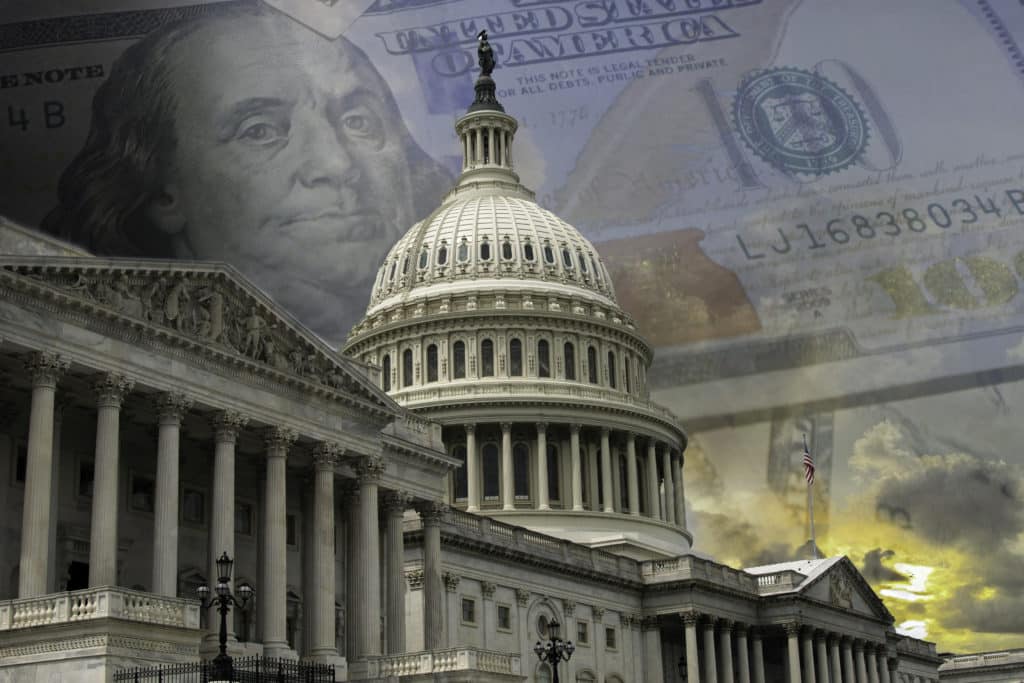At the time of this writing (July 4th, right before I step away for vacation!), the Senate and House have approved the One Big Beautiful Bill Act and it is on President Trump’s desk for final approval.
While the bill is a beast (over 900pgs depending on your font size!), let’s back into some of the key provisions as it pertains to personal financial planning considerations.
-
Increased Standard Deduction + New $6,000 Tax Exemption for Seniors (Age 65+)
Standard Deduction: The 2025 standard deduction increases from $15,000 to $15,750 for an individual taxpayer and from $30,000 to $31,500 for a married couple filing jointly.
New Exemption (65+): Taxpayers age 65 or older (by Dec 31) can now claim a $6,000 personal exemption, in addition to the standard or itemized deduction.
For married couples that are both 65+, this doubles to $12,000. Individuals with incomes of up to $75,000 ($150,000 for spouses filing jointly) can subtract the full $6,000 from their taxable income.
The deduction phases out at higher income levels, and you can’t claim any of it if you earn more than $175,000 ($250,000 for a couple).
While not permanent, this is in effect from 2025–2028.
-
Federal Student Loan Overhaul:
Lots on this topic, will try to keep it brief:
- All current income-driven repayment (IDR) plans will be closed to new borrowers as of July 1, 2026 + replaced with a single new plan called the Repayment Assistance Plan (RAP). Existing borrowers can retain their current repayment plans until July 2028.
- The bill ends Grad PLUS loans and replaces them with strict borrowing caps: graduate students may borrow up to $20,500 per year (lifetime max $100,000), and professional students up to $50,000 per year (lifetime max $200,000).
- Parent PLUS loans are capped at $20,000 per year and $65,000 lifetime per dependent child.
- Forbearance and deferment rules are also tightened – unemployment and economic hardship deferments are eliminated for loans issued after July 1, 2027, and forbearance is limited to 9 months within any 2-year period.
- The law introduces program-level accountability for colleges: institutions whose graduates consistently earn less than the median income of peers without degrees may lose access to federal student aid.
-
SALT Deduction Cap Temporarily Increased
Deductions for State and Local Taxes (SALT) were previously capped at $10k/yr – most of our clients hit this cap just in property taxes alone.
The new cap is raised for those with MAGIs below $500k, $40,000 SALT cap for joint filers and $20,000 for single.
The SALT deduction cap will increase by 1 percent a year until 2030, when, under the new law, it reverts to $10,000.
-
Charitable Deduction for Non-Itemizers
Taxpayers can now deduct up to:
$1,000 (single) or $2,000 (joint) in charitable donations, even if using the standard deduction. This applies annually beginning in 2025.
-
Auto Loan Interest Deduction Introduced (Temporary)
Up to $10,000 deduction for car loan interest.
Caveats:
- Vehicle’s final assembly must be at a U.S. factory.
- Eligibility is tied to income: If you earn more than $100,000 (individual) or $200,000 (couple filing jointly), the deduction tapers off by $200 for every $1,000 of additional income. If you are a single filer earning $120,000, for example, you can deduct $6,000 of car loan interest
-
HSA + 529 Expansion
HSAs: Now allowed for bronze/catastrophic ACA plans and can cover telehealth and direct primary care pre-deductible.
529s: Broader allowable uses including certain certification programs, direct career training expenses, testing fees, tutoring, and educational therapies for students with disabilities.
-
“Trump Accounts”
This provision creates a pilot program for U.S. citizens born between 2025 and before 2029 – the federal government will contribute $1,000 per child into every eligible account and the ability for parents to contribute up to $5,000 annually, potentially growing tax-free until age 18.
These accounts are eligible to receive contributions from parents, relatives, and other taxable entities as well as non-profit and government entities.
The accounts will be structured as individual retirement accounts under Section 408(a) of the Internal Revenue Code (but not Roth IRAs). No distributions are permitted from the Trump account before the calendar year in which the beneficiary attains age 18, but thereafter, the account is treated and taxed the same way as a traditional IRA.
-
Enhanced Affordable Care Act Subsidies Set to Expire
The enhanced ACA subsidies are not extended in this legislation and are set to expire at the end of 2025.
Starting in 2026, subsidy eligibility will return to pre-ARPA rules which means:
- Clients with incomes above 400% of the federal poverty level (FPL) may no longer qualify.
- Out-of-pocket premium costs for many households could increase substantially.
-
Estate Tax Exemption Made “Permanent” at Higher Levels
The doubled estate tax exemption (~$13.6M individual / ~$27.2M couple in 2025) is now permanent (no sunset) and raises the exemption amount to $15 million per individual, adjusted for inflation.
Macro Concerns
While the One Big Beautiful Bill Act may offer some short-term benefits it also introduces long-term challenges.
Grows Federal Deficit:
Author and investor, Ray Dalio, has publicly warned about the fiscal trajectory this legislation locks in – we’ve written about his thoughts before.
With approximately $7 trillion in annual federal spending against only $5 trillion in projected revenue, Dalio notes that the national debt – already at 100% of GDP – will rise to 130% of GDP within the next decade. That equates to a debt burden of $425,000 per American family.
As interest and principal payments on this debt balloon from $10 trillion to $18 trillion (including $2 trillion in annual interest payments), the U.S. will be forced to choose between:
- severe spending cuts
- significant tax increases, or
- large-scale money printing that debases the dollar.
Dalio’s central message is stark: what’s bad for bonds and U.S. credit markets is bad for the entire economy, since U.S. Treasuries underpin global capital markets and domestic economic stability.
Consumer Financial Protection Bureau Gets Dismantled
The CFPB loses it’s funding from the Federal Reserve. Additionally, the agency is transitioned from a single-director model to a five-member commission and has it’s authority to police “unfair or abusive” severely narrowed.
These changes reduce the Bureau’s enforcement power and autonomy, raising the likelihood of consumer harm in areas like credit, lending, and banking – especially for vulnerable or lower-income populations.
Renewable Energy Incentives Eliminated:
Nearly all tax credits and funding for solar, wind, grid modernization, EVs, and clean building initiatives are rescinded or defunded. This comes at a moment when artificial intelligence and data infrastructure are driving exponential demand for electricity.
The mismatch between growing energy needs and reduced federal support for clean energy deployment could lead to long-term pressure on energy prices, grid reliability, and climate resilience – compounding both market and societal risks.
Final Thoughts:
Major legislation like the One Big Beautiful Bill Act reminds us that financial planning isn’t a one-time event – it’s a continuous process of adapting to change. While many provisions in this bill offer near-term opportunities, others raise long-term concerns that will require careful monitoring and recalibration over time.
As always, we are in your corner and here to help you navigate the knowns and prepare for the unknowns.
We’ll continue to track implementation details and regulatory guidance as they unfold and will be in touch proactively with planning recommendations tailored to your specific situation.
In the meantime, please don’t hesitate to reach out with questions. We’re honored to walk alongside you, whatever lies ahead.






